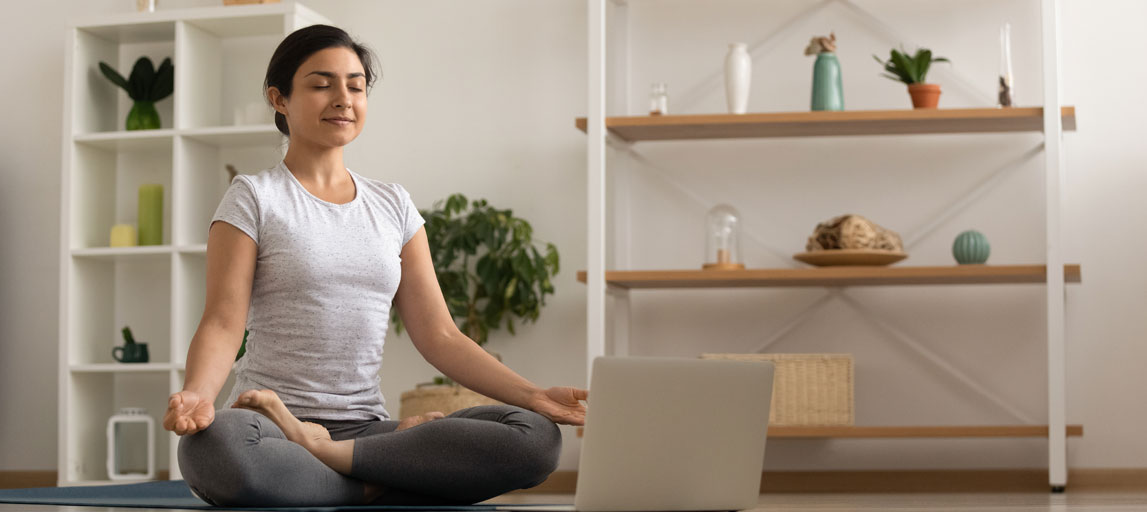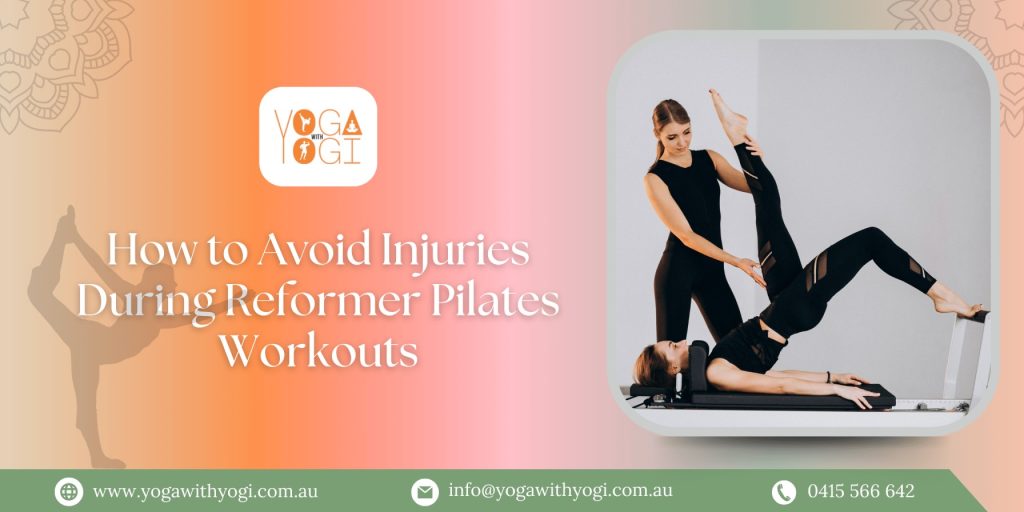If you’ve stepped into a reformer Pilates studio in Australia recently, you’re not alone. Reformer Pilates has absolutely taken off over the past few years—and for good reason! It’s low-impact, effective, and incredible for core strength, mobility, and full-body conditioning.
But while Pilates is often promoted as “gentle,” injuries can still happen if you’re not careful with form, resistance, or pacing—especially if you’re new to the reformer machine.
In this blog, we’re breaking down how to avoid injuries during reformer Pilates workouts, so you can get the most out of your sessions and stay safe along the way.
Why Injury Prevention in Pilates Matters
Reformer Pilates might look slow and controlled, but don’t be fooled—it’s a serious workout. You’re engaging deep stabilising muscles, working with resistance springs, and doing movements that require precision.
According to Physiotherapy Australia, improper technique or poor supervision are among the leading causes of Pilates-related injuries, particularly to the lower back, knees, and shoulders.
Whether you’re practising at home or in a reformer Pilates studio, keeping injury prevention top of mind ensures your practice stays sustainable and effective long-term.
Importance of Proper Instruction and Supervision
Let’s start with the obvious—don’t DIY your way through the reformer unless you really know what you’re doing.
A qualified instructor will:
- Demonstrate proper setup and alignment
- Adjust your form and resistance levels
- Offer modifications based on your body and experience
💡 Pro tip: If you’re brand new, opt for private or small group classes at a certified reformer Pilates studio near you. Many Aussie studios (like ours at Yoga with Yogi) offer beginner-friendly packages to help you ease in safely.
Always Start With a Warm-Up
Jumping straight onto the reformer without warming up is a recipe for injury.
A proper warm-up:
- Activates core and glute muscles
- Increases circulation to joints and tendons
- Prepares your nervous system for mindful movement
Even just 5 minutes of dynamic stretching or gentle mat Pilates before your class can make a world of difference.
Understand Your Equipment Before You Begin
The reformer might look intimidating at first—with its springs, straps, carriage, and foot bar—but taking time to understand how it works is crucial.
Before your first class, you should know:
- How to adjust the foot bar and headrest
- What each spring resistance colour means
- How to use the safety stopper and shoulder blocks
If you’re unsure, ask your instructor for a quick demo. No question is silly—we all start somewhere.
Maintain Proper Form and Alignment
Pilates is less about how far you can stretch, and more about how well you can control your movement.
Keep these form tips in mind:
- Engage your core during all movements
- Maintain a neutral spine (no excessive arching or rounding)
- Avoid tensing the neck, jaw or shoulders
Using mirrors and listening closely to instructor cues can help keep your alignment in check. It’s better to move slower and safer than to overextend.
Don’t Overdo the Springs (Resistance)
Many people assume that “more resistance = better workout.” But in Pilates, heavier springs can sometimes make the exercise easier, while lighter springs challenge your stabilising muscles more.
Start with:
- Light to moderate resistance if you’re a beginner
- Slowly increasing tension once your form improves
- Asking your instructor to recommend spring combinations for your level
💡 Fun fact: According to a 2021 Pilates Australia report, 41% of Pilates-related injuries came from misusing spring tension.
Listen to Your Body and Know Your Limits
One of the best things about Pilates is its focus on body awareness. Use it to your advantage!
Watch out for:
- Pain or pinching (stop immediately)
- Fatigue in the wrong muscles (e.g., using neck instead of core)
- Holding your breath (a sign of overexertion)
If you’re ever unsure whether something is normal, ask your instructor. And remember—it’s okay to take a break.
Be Mindful of Pre-Existing Conditions or Injuries
If you’re recovering from injury or have chronic pain (especially in your back, knees, or shoulders), always let your instructor know before class.
A good reformer Pilates studio will:
- Offer modifications to suit your needs
- Guide you to exercises that support healing
- Recommend switching to clinical or physio-led Pilates if needed
Safety comes first—no exceptions.
Stay Consistent But Don’t Skip Progressions
We all want to feel strong and capable. But jumping into advanced classes too early can backfire.
Instead:
- Build a strong foundation in beginner classes
- Move to intermediate levels once you’re confident
- Don’t rush—progression in Pilates is about precision, not speed
Sticking to a consistent schedule 2–3 times a week will help you improve safely and steadily.
Hydration, Footwear, and Clothing Tips
A few simple habits go a long way:
- Hydrate before and after class to support joints and flexibility
- Wear grippy socks to avoid slipping on the carriage
- Choose fitted, stretchy clothing to allow movement and avoid getting caught in the springs
Bonus tip: Tie your hair back and remove jewellery to avoid distractions or discomfort.
Final Safety Checklist Before Every Class
✅ Did you check your spring setup and machine settings?
✅ Are you clear on the class format (strength, stretch, cardio)?
✅ Do you know how to modify if needed?
✅ Are you breathing evenly and staying connected to your core?
If anything feels off—pause and ask. Injury prevention starts with self-awareness.
Final Thoughts: Move With Confidence and Care
Reformer Pilates is an amazing way to strengthen your body, improve mobility, and feel more in control of your health. But like any form of movement, it comes with risks if you’re not mindful.
By following these simple tips, choosing the right reformer Pilates studio, and staying tuned in to your body, you’ll enjoy all the benefits—without the setbacks.
🧘♀️ Ready to experience safe, effective reformer Pilates?
Join Yoga with Yogi for beginner-friendly reformer Pilates studio sessions—guided by certified experts who put your safety and success first.





